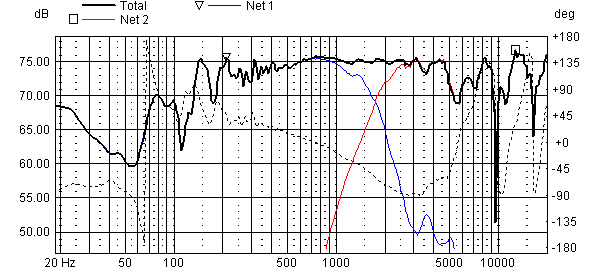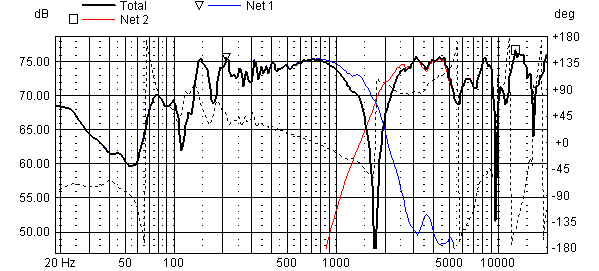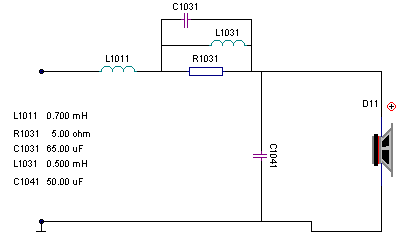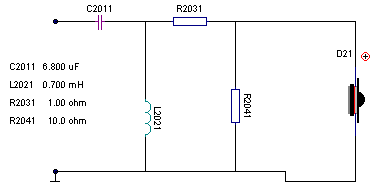|
Here is another take on modifying the popular Insignia speaker that Best Buy used to sell regularly for $50 a pair, and frequently on sale for $40 a pair. Unfortunately, they raised the price to $80 a pair in January, although it's almost always on sale for $8-$20 off. Even at the new price, you get one of the best deals in audio. It looks good and plays music about as well as speakers costing 2 or 3 times as much. But it does have problems. The woofer has a prominent resonant peak at 800 Hz, followed by a sharp dip. And then the woofer goes into breakup mode around 5 kHz. The simple crossover does not deal with either of these issues. The tweeter is basically very smooth, but its coaxial location deep in the "tunnel" of the woofer causes sharp interference patterns in the upper highs. There's nothing to be done about the latter problem, which is probably less audible than it looks (and does dissipate off-axis). But the two woofer issues can be addressed with a proper crossover. Others have also recommended coating the woofer to dampen it, but I don't think that is necessary. I have attempted to design the simplest possible crossover that can smooth the woofer out and provide proper phase integration with the tweeter at the crossover point. To further economize, I constrained the network to use the existing .7 mH inductor in the stock crossover. And to simplify construction, I commissioned a run of printed circuit boards designed specifically for my schematic. (Thanks go to Aaron Hammett for making that possible.) I've sold out of my original inventory and have decided not to reorder. Instead, I am posting my schematic so that you can build the board from scratch. If you have any questions, don't hesitate to e-mail me. Here is the response of the stock Insignia. You can easily see the two peaks in the plot of the woofer response (blue trace):

Here is the response with the new crossover:

Notice in particular that the woofer's break-up mode is now about 25 dB down, and the 800 Hz bump has been largely eliminated. Although the stock response may appear smoother in the 5 - 9 kHz range, a lot of that is breakup from the woofer, which you do not want to hear. Finally, here is the response with the tweeter polarity reversed. The deep 30 dB null shows that the tweeter and woofer are in phase when connected with the intended direct polarity.

So how much does all this cost? The crossover components from Madisound will run about $33 a pair, plus shipping. That includes a poly cap for the tweeter, Bennic electrolytics for the woofer, 19 Ga inductors (the stock .7 mH coil is 16 Ga), and Eagle resistors. Here are the schematics. Please note that the woofer and tweeter are both connected with direct polarity. The stock board uses a reverse polarity connection for the tweeter.


Here is a parts list, with the appropriate links to Madisound. You'll need 2 each of the following:
|

